Ranches provide key wildlife passages between two protected ecosystems
On his ranch in Montana’s Ruby Valley, Rick Sandru can load hay and enjoy views of the snowcapped Tobacco Root Mountains as geese honk overhead. “I just love Southwest Montana,” he says. “It’s what all of Montana used to be like. It’s rural communities, friendly people, good schools, good land.” To Sandru, working ranches are the foundation of all of that. “That’s what people who move here to recreate enjoy. They just don’t know what a fragile balance that is.”
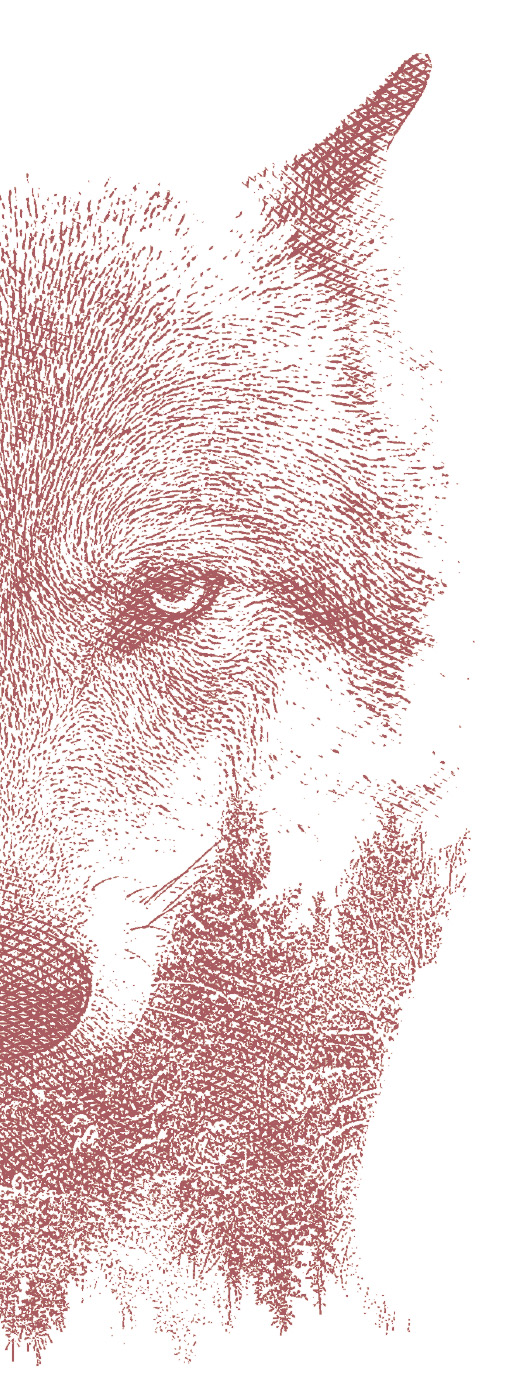 In 2010 Sandru and his neighbors felt that balance tipping when their grazing association lost 61 calves and 23 cows to wolves. Now, grizzly bears are moving into Sandru’s higher-elevation summer grazing allotments. It seems like only a matter of time before they are on his land in the valley too. While he doesn’t see bears as the biggest threat to his operation, he’s concerned they could become one more thing that weighs against his ranch’s viability. “I love all wildlife,” he says. “That’s one of the benefits of my lifestyle. But when you have too many predators it starts threatening your life and your livelihood.”
In 2010 Sandru and his neighbors felt that balance tipping when their grazing association lost 61 calves and 23 cows to wolves. Now, grizzly bears are moving into Sandru’s higher-elevation summer grazing allotments. It seems like only a matter of time before they are on his land in the valley too. While he doesn’t see bears as the biggest threat to his operation, he’s concerned they could become one more thing that weighs against his ranch’s viability. “I love all wildlife,” he says. “That’s one of the benefits of my lifestyle. But when you have too many predators it starts threatening your life and your livelihood.”
Sandru’s livelihood, and that of many other ranchers, is something conservation groups have found strong incentive to care about. The Ruby Valley and his ranch are part of a vast swath of Montana and Idaho that conservationists call the High Divide. Unlike the Greater Yellowstone Ecosystem to its east, and the Salmon-Selway’s massive roadless areas to the west, the High Divide has no large protected area anchoring it. Instead, it’s made up of smaller publicly owned mountain ranges, interspersed with valleys that are largely private ranch and timber lands.
But the High Divide is no less important than the two more famous ecosystems flanking it. In the last decade, scientists studying iconic species like wolverines, grizzlies, and antelope have found that working ranches are crucial travel corridors for wildlife moving between the Yellowstone ecosystem and the Northern Rockies. That recognition of how the larger ecosystem’s fate is tied to that of ranches is motivating conservation groups in Montana and Idaho to work more collaboratively with ranchers.
“If we’re thinking about a multispecies connection across [the region], it can’t just be [a single valley], it has to be all of those mountain ranges, all of those intervening valleys, that have to really work together in a comprehensive or coordinated way to really make that connection between the Greater Yellowstone and the Salmon-Selway [Wilderness], and the Crown of the Continent work,” says Jeff Burrell, the Bozeman, Montana-based biologist who coordinates the Wildlife Conservation Society’s work in the Northern Rockies. “And you can’t do that without private lands.”
![]()
For a long time, biologists had a sense that the High Divide was an important travel corridor for antelope, deer, wolverines, and grizzlies. But they didn’t have much science showing how those pathways work. Since the High Divide is vast, and the coffers for funding conservation work aren’t, conservationists needed better data to justify which parcels animals need most.
In the early 2000s, Wildlife Conservation Society biologists started putting GPS collars on wolverines and antelope to make detailed maps of their movements. Back then, biologists knew very little about basic wolverine ecology like their population sizes, their essential habitats, or how far they traveled outside of those core areas.
From a decade of study, researchers learned that the Yellowstone ecosystem’s wolverines travel quite far. In 2002 a young male wolverine, the first one ever fitted with a GPS collar, traveled from the Teton Range near Jackson Hole, Wyoming, to the Portneuf Range near Pocatello, Idaho, and back—at least 250 miles in just 19 days. The discovery that wolverines often use valley lands as stepping stones between their core mountain habitats helped confirm the vital role of private landowners in conserving the lower 48 states’ 300 or so wolverines.
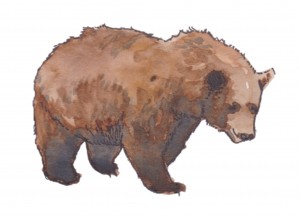 As the Wildlife Conservation Society tracked wolverines and antelope, biologists from universities and government agencies ran similar projects with grizzly bears and big game. Collectively those GPS-collaring studies yielded colorful maps showing a spider web of animal movements. Over the years, those maps have revealed which parcels of land animals are most likely to use when migrating through or dispersing across the ecosystem. For wolverines and grizzlies especially, biologists learned long-term persistence hinges on animals isolated in the Yellowstone ecosystem mixing with northern populations. That makes the ranchers in between very important land managers.
As the Wildlife Conservation Society tracked wolverines and antelope, biologists from universities and government agencies ran similar projects with grizzly bears and big game. Collectively those GPS-collaring studies yielded colorful maps showing a spider web of animal movements. Over the years, those maps have revealed which parcels of land animals are most likely to use when migrating through or dispersing across the ecosystem. For wolverines and grizzlies especially, biologists learned long-term persistence hinges on animals isolated in the Yellowstone ecosystem mixing with northern populations. That makes the ranchers in between very important land managers.
“It was the realization that there’s only a very small handful of wolverines in any one mountain range, and when the young ones take off to find their own territory and an unrelated mate they have to go across these valley bottoms,” says Bob Inman, who ran the Wildlife Conservation Society’s wolverine research and now studies them for Montana Fish, Wildlife and Parks. “If they can’t do that, they can’t breed and remain genetically viable.”
![]()
Research showing the importance of private lands to wildlife movement and long-term population health has helped create a sense of urgency for large-scale conservation work in the High Divide. As its open spaces, public lands, and recreational opportunities have attracted more people, the High Divide has seen significant rural development. Over the last 50 years, single-family homes in the High Divide have nearly tripled, according to a 2015 report by the Bozeman, Montana-based research nonprofit Headwaters Economics. Since 2010, 63 percent of those new homes have been built outside of town, on what was once mostly agricultural and forest land.
While rural development may not look like a big intrusion to human eyes, even low-density homes can be bad news for biodiversity. In one rural Colorado-based study, human-adapted species like European starlings and black-billed magpies took over developed ranchettes, while intact, working ranches and nature preserves both supported carnivores and less-common songbirds. Ranches also had a higher percentage of native plant species than both the ranchettes and protected areas. In a Montana study, researchers found that yellow warblers near Yellowstone National Park have less reproductive success when rural development is high. Researchers have also learned that grizzly bears are more likely to die when they are closer to roads, homes, and other development.
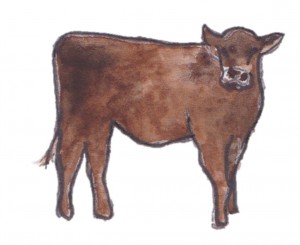 Some High Divide valleys already have longstanding efforts to resist trends that harm both wildlife and ranching communities. The Centennial Valley, near Yellowstone National Park’s western edge, is an important passage for elk, deer, antelope, and large carnivores. It’s also prime sage grouse habitat, plus one of the last places to find river-dwelling arctic grayling in the lower 48 states. Most of the valley floor is publicly owned or in the hands of multi-generation ranching families. Over the years, The Nature Conservancy, government agencies, and ranchers have worked together on conservation easements, weed control, and stream restoration. Today more than 60 percent of the Centennial Valley’s private land is permanently conserved, and the valley remains largely ecologically intact.
Some High Divide valleys already have longstanding efforts to resist trends that harm both wildlife and ranching communities. The Centennial Valley, near Yellowstone National Park’s western edge, is an important passage for elk, deer, antelope, and large carnivores. It’s also prime sage grouse habitat, plus one of the last places to find river-dwelling arctic grayling in the lower 48 states. Most of the valley floor is publicly owned or in the hands of multi-generation ranching families. Over the years, The Nature Conservancy, government agencies, and ranchers have worked together on conservation easements, weed control, and stream restoration. Today more than 60 percent of the Centennial Valley’s private land is permanently conserved, and the valley remains largely ecologically intact.
Efforts like those in the Centennial Valley, or others to restore salmon in Idaho’s Lemhi Valley, to protect rare arctic grayling in Montana’s Big Hole Valley, and to place conservation easements on half of the Madison Valley’s private land, are significant in their own rights. But through tracking animals fitted with GPS collars, biologists have learned that keeping the whole ecosystem intact for large carnivores and ancient ungulate migrations will require an even more collective effort throughout the High Divide.
In 2012 the Heart of the Rockies Initiative, a partnership of 23 land trusts, led the formation of a group of called the High Divide Collaborative. The collaborative includes conservation groups, government agencies, businesses, and ranchers interested in maintaining working ranches, recreation access, and ecological connectivity. According to Heart of the Rockies’ Driggs, Idaho-based executive director, Michael Whitfield, their success will hinge on listening to landowners about their needs, focusing on the common goals they share, and promising to stick around for the long haul.
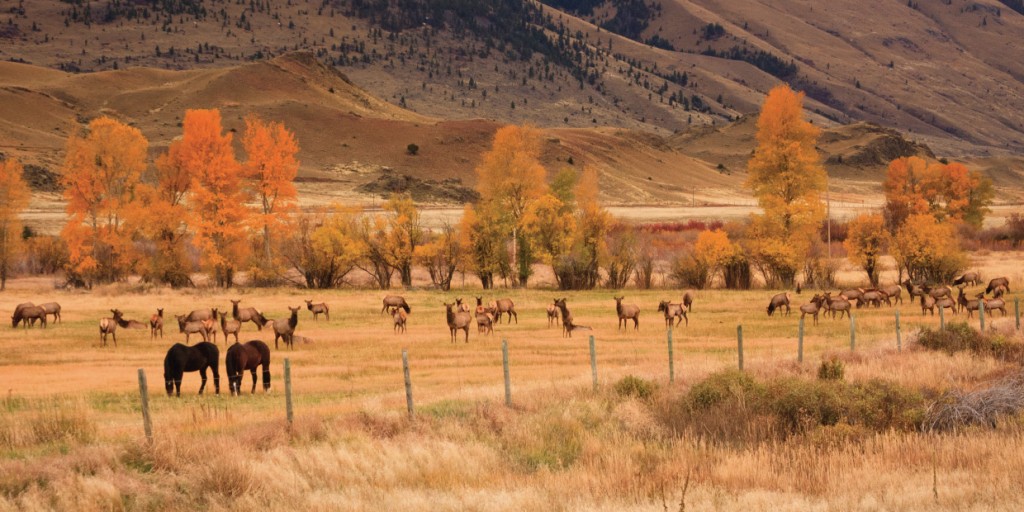
In 2016 the High Divide Collaborative secured $16 million from the Land and Water Conservation Fund to assist landowners with conservation easements and other projects on about 8,250 acres. “That sounds like a heck of a lot of money, but the reality is that it’s not a lot when you think about the landscape,” says Whitfield. “You have to be really strategic about what you protect.” That’s why Heart of the Rockies is working with state wildlife managers and other scientists to find places where easements can prevent existing migration bottlenecks from pinching shut forever. They are also modeling how wildlife movements might change with the warming climate.
While most of the High Divide easements are slated to happen in the next couple of years, the collaborative has already had success just outside the western border of Yellowstone National Park. The area, known as the Upper Henry’s Fork, is important for the elk, mule deer, antelope, moose, grizzly bears, and wolverines that use private land to move in and out of Yellowstone. While conservationists have been working there for years, summer home sprawl still has potential to clog bottlenecks for wildlife movement. Amid local concern for wildlife and ranch lands, the High Divide Collaborative is helping ten landowners secure conservation easements that will keep those corridors open.
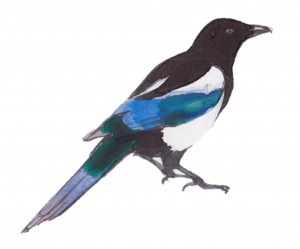 To the conservation-minded ranchers joining the High Divide Collaborative, wildlife are reminders of their land’s importance in a much larger ecosystem. Last year, Whitfield traveled to Washington, DC, with Montana rancher Erik Kalsta and Idaho rancher Merrill Beyeler to advocate for Congress’ continued funding of the Land and Water Conservation Fund. Whitfield recalls how Beyeler, who is also a state representative, described the pronghorn migration through his property. “I personally see these animals moving through my ranch to their summer ranges and my family wants to be part of that, we want to be part of that bigger landscape,” Beyeler told a group of legislators. “Now through the High Divide Collaborative we are connected all the way to Yellowstone.”
To the conservation-minded ranchers joining the High Divide Collaborative, wildlife are reminders of their land’s importance in a much larger ecosystem. Last year, Whitfield traveled to Washington, DC, with Montana rancher Erik Kalsta and Idaho rancher Merrill Beyeler to advocate for Congress’ continued funding of the Land and Water Conservation Fund. Whitfield recalls how Beyeler, who is also a state representative, described the pronghorn migration through his property. “I personally see these animals moving through my ranch to their summer ranges and my family wants to be part of that, we want to be part of that bigger landscape,” Beyeler told a group of legislators. “Now through the High Divide Collaborative we are connected all the way to Yellowstone.”
![]()
While easements are crucial to keeping dispersal and migration corridors open, they aren’t enough on their own. The Wildlife Conservation Society’s research shows that animals favor river and stream valleys for their travels. That means that all of the easements in the world aren’t enough if they protect riparian areas devoid of food and cover, or if carnivores that use them are likely to tangle with livestock.
“For a long time the driving focus was keeping the subdivisions out and keeping the ranches going,” says Burrell. “Now it’s clear that that’s necessary, but it’s not really sufficient to achieve what we want to see in terms of wildlife connectivity.” So as the High Divide Collaborative is working on the conservation easement front, the Wildlife Conservation Society, and others, are working with ranchers to foster coexistence with carnivores and restore riparian habitat.
In 2004 when Mark and Jenny Sabo purchased a property on the High Divide’s eastern edge, they noticed it wasn’t living up to its potential as wildlife habitat. They decided to improve the creek running through their property, where the dry and naked stream bank left little food or cover for wildlife. That ranch also happened to stand out in wildlife movement models as an important thoroughfare for elk and moose. Instead of bringing in expensive excavators to restore the stream, in 2013 the Wildlife Conservation Society helped install in-stream cottonwood and willow structures that mimic beaver dams and slow down water. Meanwhile, the Sabos fenced off the riparian area and only let their cattle graze near it for short, heavily supervised, periods.
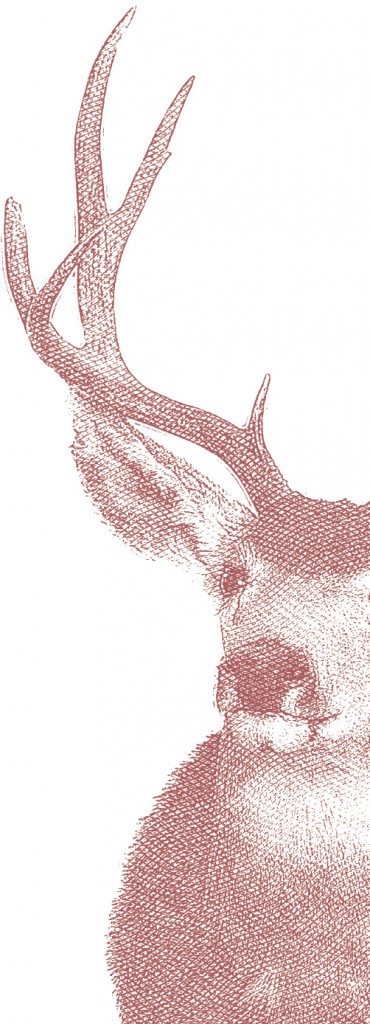 Three years into the project dense willows are returning to the creek side, game cameras and surveys are capturing more elk and amphibians on the ranch, and the Sabos have seen evidence of beaver moving in. The restoration work also yielded “tremendous gains” in the creek’s late summer flows, says Burrell. That’s an important selling point for ranchers, regardless of their interest in biodiversity. The Wildlife Conservation Society is now working on five similar riparian restoration projects in the High Divide.
Three years into the project dense willows are returning to the creek side, game cameras and surveys are capturing more elk and amphibians on the ranch, and the Sabos have seen evidence of beaver moving in. The restoration work also yielded “tremendous gains” in the creek’s late summer flows, says Burrell. That’s an important selling point for ranchers, regardless of their interest in biodiversity. The Wildlife Conservation Society is now working on five similar riparian restoration projects in the High Divide.
Conserving the High Divide for wildlife connectivity means enhancing habitat, but also making it easier for ranchers to live with animals as they move through the landscape. That can be a delicate balance, says Kris Inman, who runs the Wildlife Conservation Society’s community-based conservation programs in the High Divide. Four years ago, when she switched from studying wolverines to working in High Divide communities, ranchers told her that they considered reducing carnivore conflicts to be a high priority. “There was a time where people who were impacted by recovering carnivore populations thought lethal control was the only way to deal with it,” says Inman. “It’s a better time now. People are more open to proactive strategies than they once were.”
For instance, Sandru and his neighbors have adjusted to wolf populations expanding in southwest Montana. From his perspective, the state is now doing a better job of managing the wolves, and ranchers in his area created a livestock loss board to help compensate for cattle deaths.
Now as grizzly bears move back into the High Divide, ranchers are getting ahead of conflicts by studying what’s worked well in a valley to the north, one that’s also rich with agriculture and carnivores. Over 20 years ago ranchers, conservationists, and government agencies in west-central Montana formed a collaborative called the Blackfoot Challenge. Together, they’ve dealt with everything from wolves eating livestock to managing irrigation so the Blackfoot River doesn’t run dry.
In 2003 the Blackfoot Challenge started a program to collect and compost the cow carcasses that accumulate on ranches, largely from natural deaths during calving season. They also collect roadkill and put electric fences around beehives and calving grounds. Since removing those carnivore attractants, the valley has seen a 93 percent reduction in livestock and grizzly conflicts. Inman, along with local watershed conservation districts, her colleagues at the non-profit People and Carnivores, and Ruby and Big Hole valley ranchers, plan to have a similar carcass composting program running next year.
“Ranching and conservation go hand and hand,” says Sandru, who is a leading rancher in the composting effort. In the past, he disagreed with environmental groups as they pushed for a wilderness proposal that could have harmed his grazing leases. But as Sandru chatted with the conservationists at public meetings, he learned that they had many shared values. In the end, they worked out a wilderness agreement that ranchers could live with. Inspired by that experience and his interactions with groups like the Wildlife Conservation Society, he’s organizing a new alliance with conservationists in his area. Their goal is reducing litigation and speaking with a united voice on public land and wildlife management. “By having an active collaborative, I feel that’s our best hope for being able to protect our way of life and maintain these open spaces, the working ranches, and the public lands that they all depend on.”
![]()
Wolverines are known for being elusive mountain-dwellers, so it’s a rare treat for even a biologist to see one. That’s why, about five years ago, it surprised Erik Kalsta to spot one loping through his ranch’s cottonwoods along the Big Hole River. “We run into a lot of animals that ‘shouldn’t’ be here, so we suppose they’re transitioning through,” he says. “This is a special place for wildlife.” Kalsta has been trying to keep it that way by restoring wetlands and uplands, working with biologists to install bat boxes, and figuring out how he can manage irrigation to improve bird habitat.
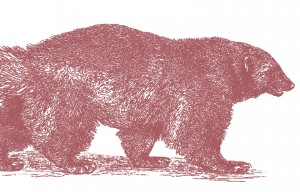 Like Sandru, Kalsta thinks conservation groups are starting to do a better job of seeing ranchers as potential partners, as opposed to adversaries. “It’s the carrot or the stick,” he says. “If you can give someone a carrot and a hand up and work beside them, rather than regulatory punishment, you are going to get a lot farther,” says Kalsta. “I think people have realized that, and I think they’ve come a long way.”
Like Sandru, Kalsta thinks conservation groups are starting to do a better job of seeing ranchers as potential partners, as opposed to adversaries. “It’s the carrot or the stick,” he says. “If you can give someone a carrot and a hand up and work beside them, rather than regulatory punishment, you are going to get a lot farther,” says Kalsta. “I think people have realized that, and I think they’ve come a long way.”
Conservation groups are also realizing that that the Northern Rockies’ long-term wildlife legacy depends on those relationships with private landowners. “What we’re learning about here is about far more than connecting Yellowstone to the Crown of the Continent,” says Burrell. “This is going to be a model for doing conservation beyond the national park model. We’re creating lots of parks and lots of reserves and wildlife species are still declining. The reason is because they are not big enough and they’ll never be big enough.
“If we don’t learn how to work with working lands, we’re not going to do wildlife conservation.”
By Sarah Jane Keller
Sarah Jane Keller is a freelance science and environmental journalist based in Bozeman, Montana. Find more of her work at sjanekeller.com.
Further Reading
Andrew J. Hansen and Jay J. Rotella. “Biophysical Factors, Land Use, and Species Viability in and around Nature Reserves.” Conservation Biology 16 (2002): 1112-1122.
Andrew J. Hansen, et al. “Effects of Urban and Exurban Development on Biodiversity: Patterns, Mechanisms, and Research Needs.” Ecological Applications 15 (2005): 1893-1905.
Charles C. Schwartz, et al. “Hazards Affecting Grizzly Bear Survival in the Greater Yellowstone Ecosystem.” Journal of Wildlife Management 74 (2010): 654–667.

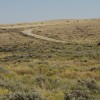
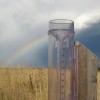
Pingback: Carnivores, not condos: Ranches provide wildlife passages between two protected ecosystems | Sarah Jane Keller